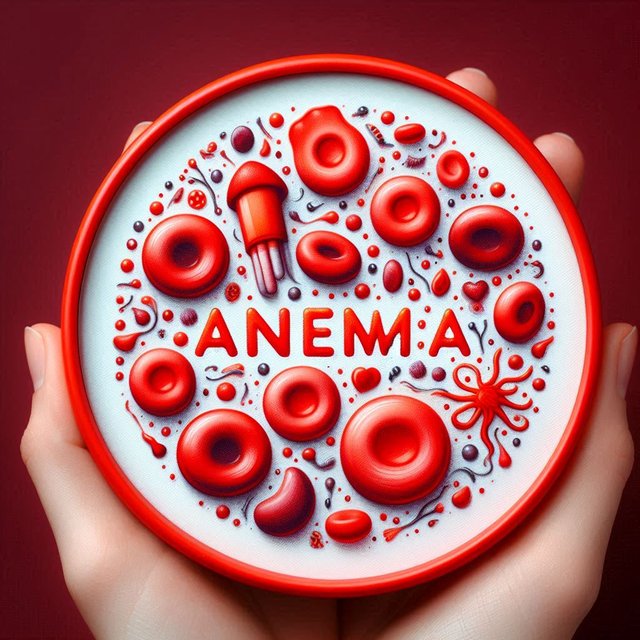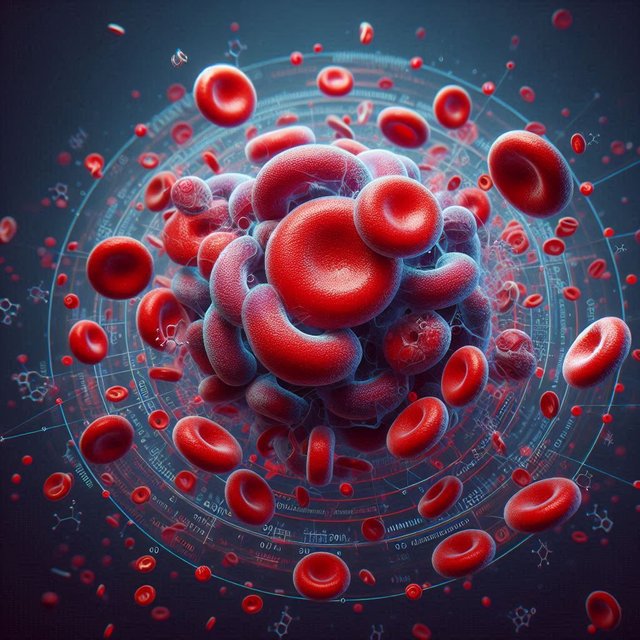Greetings, everyone; it is a pleasure to join this week's engagement challenge, which was organized by @dexsyluz, who happens to be one of the members of the Teaching teams for season 20. Today I'm participating in the contest titled Hemolytic Anemias - Module 5. A few questions have been given to attempt and I will be doing that straight away.
| Define Hemolytic Anemias (2.5 points) |
|---|
When we talk about Hemolytic Anemias, we are referring to a group of disorders in the body system that are a result of premature destruction of the red blood cells, and this causes a decrease or reduction in the flow of the red blood cells in the body. Usually, red blood cells have a lifespan of 120 days in the body of a normal individual who is healthy and strong, but when the individual is faced with Hemolytic Anemias, the red blood cells don't last up to this number of days.
So, in essence, Hemolytic Anemias talks about red blood cell destruction. We have two types of Hemolytic Anemias and they are Intrinsic (Inherited) Hemolytic Anemias and Extrinsic (Acquired) Hemolytic Anemias. We will look at them one after the other below.
Intrinsic (Inherited) Hemolytic Anemias: As the name suggests inherited, these are defects in the red blood cells inherited from either parents or spouse, and some examples of these types of Hemolytic Anemias include Sickle cell anemia, Hereditary spherocytosis, Thalassemia, etc.
Extrinsic (Acquired) Hemolytic Anemias: As the name suggests acquired, this red blood cell destruction is caused by external factors such as Drugs, Infections, and many more in the spleen.
| Symptoms | Diagnosis | Treatment |
|---|---|---|
| Weakness & fatigue, shortness of breath | CBC, to show the amount of reduced red blood cells and hemoglobin | Blood transfusion to increase red blood cells |
| Pale skin and enlarged spleen | Direct Coombs test to identify antibodies that are destroying the red blood cells | Remove spleen and then provide folic acid to produce more red blood cells |
| Define Sickle Cell Anemia (2.5 points) |
|---|
Sickle Cell Anemia is a genetic blood disorder that is caused as a result of an abnormality in the production of hemoglobin, and this causes the red blood cell to become different in shape from its usual shape appearance. Usually, red blood cell is supposed to be shaped, but the abnormality in hemoglobin will make the shape change from round to rigid and crescent-shaped.
These shapes of the red blood cells caused by the disorder in the hemoglobin will also lead to the blood not flowing well. This will cause severe pain to anyone who faces such a situation. When anyone has sickle cell, he or she is exposed to the risk of getting infections because the immune which ideally was supposed to fight the infection, will be very weak, and that will lead to tissue damage and many more.
Ideally, sickle cell is inherited from parents to their offspring, especially during birth when they pass a defective gene to the newborn child. This will make the system of the child or baby very weak from the very start.
| Intravascular hemolysis vs. Extravascular hemolysis (2.5 points) |
|---|
To properly differentiate between Intravascular hemolysis vs. Extravascular hemolysis, I would like to discuss them using the table below, where I will talk about Location, Mechanism, Causes, Laboratory findings, and Clinical signs. As you already know, Intravascular hemolysis and extravascular hemolysis are all types of red blood cell destruction.
| Intravascular hemolysis | extravascular hemolysis | |
|---|---|---|
| Location | RBC is destroyed within the red blood vessels | RBC is destroyed in the spleen |
| Mechanism | RBC acts directly on the bloodstream and releases hemoglobin into plasma | Abnormal RBCs are broken and seen in the spleen |
| Causes | Can be caused due to mismatch of blood transfusion or even infection | Antibodies fighting RBCs |
| Clinical signs | Dark urine as a sign | enlarged spleen is one of the major signs |
In summary intravascular hemolysis has to do with destruction of the RBC in the blood vessels whereas extravascular hemolysis has to do with the destruction of RBC in the spleen.
| Explain a case of Hemolytic Anemia (2.5 points) |
|---|
Hemolytic Anemia as you know has to do with the destruction of red blood cells there by reducing the life span of the blood cells and then given room for infections in the body because the RBC which is supposed to act as a resistance to enable the body fight back any antibodies is weak already. Now let's consider a real case of this sickness.
A few years ago, while working as a receptionist in one of the military hospital, a woman was complaining of tiredness and when I saw her her eyes was very yellow and she came to see the doctor because of the symptoms she was having.
After a lot of tests and Diagnosis it was discovered that all the signs she was complaining about were true and that they are signs of anemia. When the doctor tried to trace her issues, he noticed that she came from a family that has this illness and as a result she also inherited it from her parents.
So the physical signs such as tiredness, fatigue, yellow eyes, dark urine and pale face showed that she was an anemia patient but for confirmation sack, a test has to be done which later proved the assertion of the doctor right.
Since the doctor found out the main cause of her anaemia, he went ahead to diagnose to know the level which that anemia is so as to know which is the best treatment to render. This is how I too became familiar with the case of anemia seven though I wasn't a medical practitioner but atleast I have an idea.
I want to invite @josepha @suboohi and @kouba01 to also join the contest in this community today.



.jpeg)
.jpeg)
Upvoted. Thank You for sending some of your rewards to @null. It will make Steem stronger.
Downvoting a post can decrease pending rewards and make it less visible. Common reasons:
Submit
@tipu curate
Holisss...
--
This is a manual curation from the @tipU Curation Project.
Downvoting a post can decrease pending rewards and make it less visible. Common reasons:
Submit
Upvoted 👌 (Mana: 9/10) Get profit votes with @tipU :)
Downvoting a post can decrease pending rewards and make it less visible. Common reasons:
Submit
Hi! Hope the woman is doing well, after a long time she realized she had anemia just like the rest of her family, maybe she was asymptomatic before. We must be very careful and keep hydrated always, this week's topic is very good to broaden our knowledge about anemias.
Greetings.
Downvoting a post can decrease pending rewards and make it less visible. Common reasons:
Submit
I learned a lot of important information from your post. Such an informative discussion on hemolytic anemias is truly inspiring. Good luck for the contest.
Downvoting a post can decrease pending rewards and make it less visible. Common reasons:
Submit